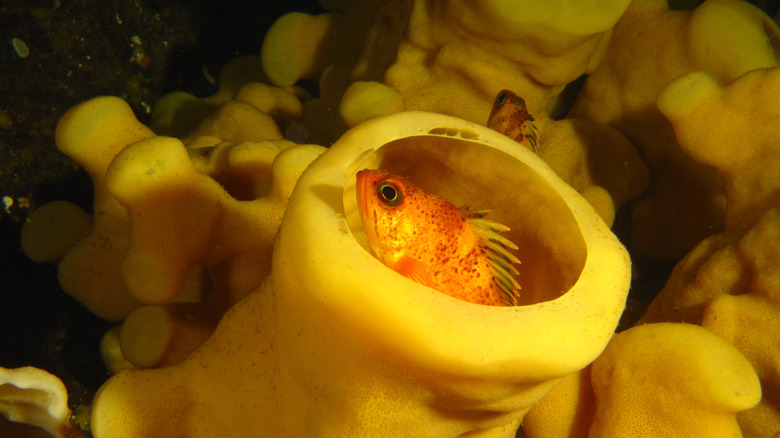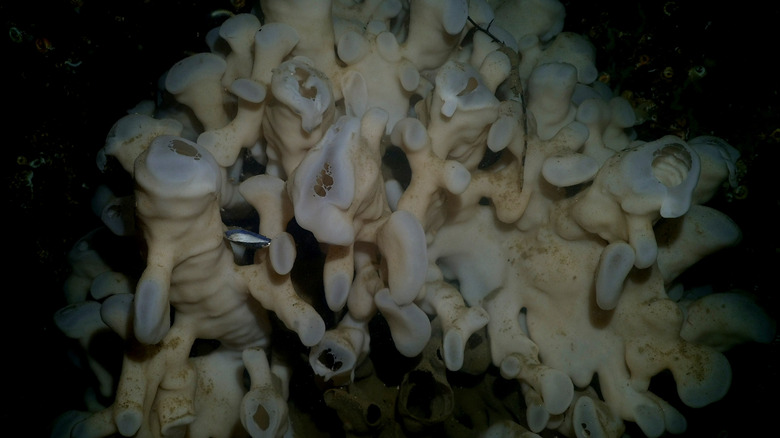The Longest-Living Animal On Earth Is Also One Of Its Strangest
Life expectancies in nature can vary drastically. Dogs live such short lives compared to their human companions, while the longest-living invertebrate, the Greenland shark, can outlive generations of a family at 400 years old. Yet, one animal has an almost incomprehensible lifespan, with some being around since the last ice age: the glass sponge.
Glass sponges have an average lifespan of around 10,000 years, with some believed to live over 15,000 years. This is significantly longer than the second- and third-longest-living creatures, with black coral reaching approximately 5,000 years and giant barrel sponges averaging 2,300 years. While they may appear to look like plants or rocks without mouths, eyes, or other recognizable traits associated with the animal kingdom, glass sponges are, in fact, animals that feed, breathe, and mate.
There are many species of glass sponges (Hexactinellid family of animals), all of which can be characterized by their structural particles (spicules) made of silica that give them a glass-like appearance. Glass sponges consume small plankton and other particles, while also acting as a home for other sea life; its silica structures can remain intact even after death. The peculiar animal grows at a slow pace; when it reaches 3.2 feet, it is estimated to be over 200 years old. If left untouched, a sponge reef can expand upwards of 82 feet high and spread over several miles. The glass sponge is not just a remarkably long-lived animal; it also plays a vital role in the health of the marine ecosystem.
How the long-living glass sponge helps the marine ecosystem
The remnants of glass sponges have existed since the Jurassic period, with fossils found across Europe. While the glass sponge was thought to be extinct for 40 million years, it was rediscovered alive in 1987 off the coast of British Columbia. Canada's Queen Charlotte Sound Glass Sponge Reef enables researchers to study the ancient creature which may help combat climate change. Notably, the glass sponge cleans the water by processing carbon and nitrogen (over 950 pounds daily), uses silica in the water to grow, filters bacteria, and fertilizes the ocean floor. Glass sponge reefs also provide shelter for various underwater life, including threatened species like the rockfish.
Despite its longevity, the glass sponge is as delicate as its namesake and is susceptible to recreational and commercial fishing damage from traps and trawls. While excelling at cleaning water, an increase in ocean temperature and acidity makes this process challenging for the glass sponge and can potentially damage or kill it. Interacting with the glass sponge is also tricky, as a surge in sediment from human actions can disrupt its feeding and growth. Sadly, the glass sponge has become just another sea life creature, like the large great white shark, with problems coexisting with humans.
The glass sponge is a remarkable animal, unlike anything else on Earth. While its continued conservation is challenging, it is also crucial for building a healthy underwater environment. With help and education, the glass sponge can thrive for decades. For more articles about remarkable long-living wildlife, check out this land animal that became a new parent at an age humans can only dream of.

